Cardinal Cantalamessa – Fourth Sermon of Lent
Jesus of Nazareth: A Person
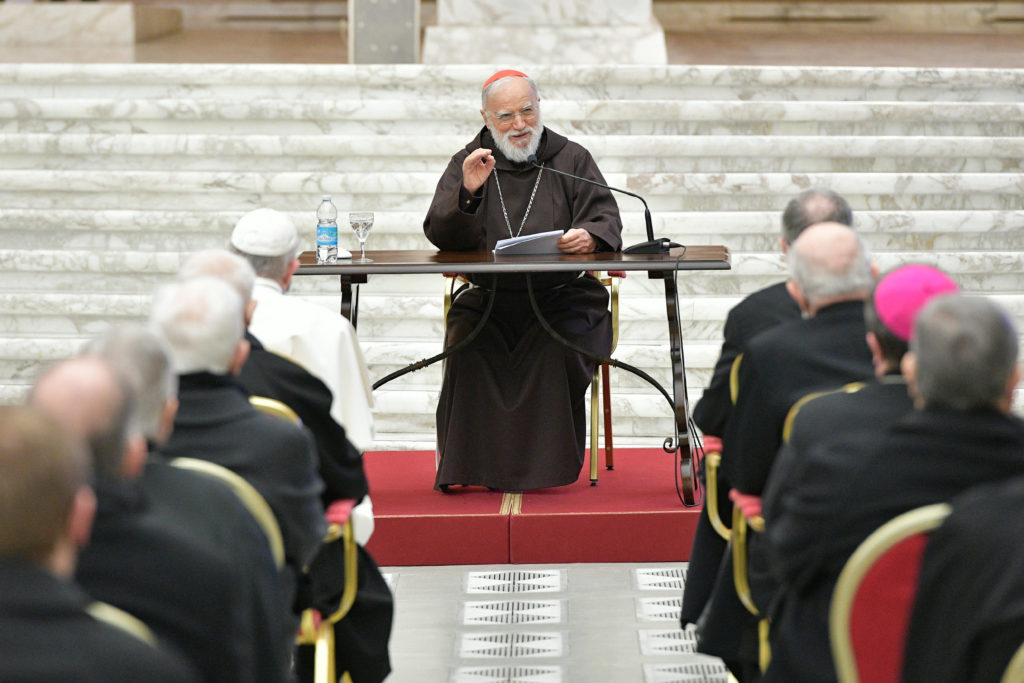
On Friday, March 26, 2021, in the Paul VI Hall, the fourth sermon of Lent was presented by the Preacher of the Papal Household, His Eminence Cardinal Raniero Cantalamessa, O.F.M. Cap.
The theme of the Lenten meditations is: “But who do you say that I am?” (Matthew, 16: 15) – Christological dogma, font of light and inspiration”.
Cardinal Raniero Cantalamessa, ofmcap
JESUS OF NAZARETH: A PERSON
Fourth Homily, Lent 2021
The Acts of the Apostles recount the following episode. On Agrippa’s arrival in Caesarea, the governor Festus submits him the case of Paul, held in custody, waiting for trial. He summarizes his case to the king with these words: ‘Those who blamed him […] had some issues with him about their own religion and about a certain Jesus who had died but who Paul claimed was alive’ (At 25:18-19). This detail, apparently so secondary, sums up the history of the twenty centuries following that moment. Everything still revolves around ‘a certain Jesus’ the world claimed was dead and the Church proclaims to be alive.
In this last meditation we intend to delve into the fact that Jesus of Nazareth is alive! He is not a memory of the past; he is not only a character, but a person. Surely, he lives ‘by the Spirit,’ but this way of living is stronger than the alternative of living ‘by the flesh,’ because it enables him to live inside us, not outside or beside us.
In our review of the dogma, we have got to the knot joining the two ends. As I said at the beginning, Jesus, ‘true man’ and Jesus, ‘true God’, are like two sides of a triangle, and the summit is Jesus as ‘one person.’ Let us recall in brief how the dogma of the personal unity of Christ originated. The formula ‘one person’ applied to Christ goes back to Tertullian[1], but it took over two centuries of reflection to understand what it genuinely meant and how it could be reconciled with the claim that Jesus was true man and true God, that is ‘of two natures.’
A key stage was the Council of Ephesus in 431, where the title of Mary Theotokos, the one who gave birth to God, was defined. If Mary can be called ‘Mother of God,’ despite giving birth only to Jesus’ human nature, that means that in him humanity and divinity form a single person. Yet the final target was only reached at the Council of Chalcedon in 451, with the formula we want to quote here in the part concerning the unity of Christ:
Following the Holy Father, we unanimously teach to profess
one and the same Son, our Lord Jesus Christ, […],
without compromising the property of each nature
and concurring to form one single person and hypostasis.[2]
If the full acceptance of the Nicaean definition took a century, full acceptance of this second definition has taken all the subsequent centuries, up to the present day. Only thanks to the recent favorable disposition towards ecumenical dialogue, has it been possible to restore communion between the so-called Nestorian and Monophysite Churches of the East and the Orthodox Church. In most cases it was noted that the difference lay in terminology rather than in doctrine. It all depended on the meaning assigned to the word ‘nature’ and ‘person’ or ‘hypostasis.’
From the adjective ‘one’ to the noun ‘person’
Having secured the ontological and objective content of the dogma, again, to revive it, we now need to highlight its subjective and existential dimensions. Saint Gregory the Great said that Scripture ‘grows along with those who read it’ (cum legentibus crescit)[3]. The same thing should apply to the dogma. Dogma is an ‘open structure’: and it grows bigger and richer, in the measure the Church, guided by the Holy Spirit, experiences new issues and faces new cultures.
Saint Irenaeus had said it with extraordinary foresight towards the end of the second century, as he wrote that a revealed truth is ‘like a valuable liqueur held in a valuable pot. Thanks to the Holy Spirit, it [the truth] grows ever younger and rejuvenates the pot which holds it as well.’[4] The Church is able to read Scripture and dogma in a way that is always new, because it is itself made new by the Holy Spirit! That is the great and simple secret behind the perennial youth of Tradition and, therefore, of the dogmas that are its highest expression. A great scholar of Christian dogma of the past century, Jaroslav Pelikan has written that “Tradition is the living faith of the dead”, traditionalism is the dead faith of the living”[5].
Also the dogma of Christ being ‘one person’ is an open structure and it can respond to the new needs of faith, which are not the same as those of the fifth century. Today no one objects to Christ being ‘one person.’ As we saw last time, there are some who deny that he is a ‘divine’ person and prefer to say that he is a ‘human’ person, in whom God resides, or works, in a supreme manner. Nobody however denies that Jesus is one single person.
The most important element regarding the dogma of Christ as ‘one person,’ lies not so much in the adjective ‘one’ as in the noun ‘person’. Not so much in the fact that Christ is ‘one and the same (unus et idem), but that he is a ‘person.’ This entails discovering and proclaiming that Jesus Christ is not an idea, a historical issue or just a character, but that he is a person and a living one for that matter! This is what is lacking and what we need most to prevent Christianity from being reduced to ideology or simply to theology.
Our constant goal is to revive the dogma, restarting from its Biblical foundations. So, let us immediately turn to Scripture itself. Let us start from the New Testament page reporting the most famous ‘personal encounter’ with the Risen Lord ever occurred on earth: that of the apostle Paul. ‘Saul, Saul, why are you persecuting me?’ ‘Who are you, sir?’ ‘I am Jesus, whom you are persecuting!” (cf. At 9:4-5). What a powerful light! Twenty centuries later, that light still shines on the Church and on the world. But let us read how he himself describes the event:
Whatever gains I had, these I have come to consider a loss because of Christ. More than that, I even consider everything as a loss because of the supreme good of knowing Christ Jesus my Lord. For his sake I have accepted the loss of all things and I consider them so much rubbish, that I may gain Christ and be found in him, not having any righteousness of my own based on the law but that which comes through faith in Christ, the righteousness from God, depending on faith to know him (Phil 3:7-10).
I almost blush as I dare to add my own little experience to that of the Apostle. But it is Paul himself, with his story, that encourages one to do just that, precisely to bear witness to the grace of God. While studying and teaching Christology, I had done quite a bit of research myself about the concept of ‘person’ in theology, on its definitions and different interpretations. I had got to know the endless discussions regarding the only person or hypostasis of Christ in the Byzantine age, its modern developments involving the psychological dimension of the person, with the consequent issue of the ‘I’ of Christ, which was being debated during my theology studies. In a certain sense, I knew everything about the person of Jesus, but I did not know Jesus personally!
It was precisely this passage from Paul that helped me to understand the difference. It was above all the sentence: ‘to know him.’ That simple pronoun – ‘him’ (auton) – seemed to me to contain more truth about Jesus than entire tracts on Christology. ‘Him’ means Jesus Christ ‘in flesh and blood.’ It was like meeting someone in person, having known their photograph for years. I realized that I knew books on Jesus, doctrines and heresies on Jesus, concepts on Jesus, but I did not know him, as a living person present here and now. At least I did not know him that way when I approached him through my history and theology studies. Until then I had had an impersonal knowledge of the person of Christ. A contradiction in terms and a paradox, but, alas, how frequent!
Person is being-in-relationship
Reflecting on the notion of person within the Trinity, saint Augustine[6] first, and saint Thomas Aquinas after him, reached the conclusion that ‘person’, in God, means relationship. The Father is such in view of his relationship with the Son: all his being consists in this relationship, as the Son is such in view of his relationship with the Father. Modern thought has confirmed this insight. As the philosopher Hegel wrote: ‘True personality consists in restoring oneself by plunging into others.’[7] A person is a person in the act of opening herself to a ‘you’ through that mutual comparison by which they acquire an awareness of themselves. Being a person is ‘being-in-relationship.’
This applies eminently to the divine persons of the Trinity, who are ‘pure relationships,’ or in theological terms ‘subsistent relationships’; yet this also applies to every person in the created realm. The person in question is not known in its reality except by entering a ‘relationship’ with them. That is why Jesus cannot be known as a person, unless one enters a personal relationship from an ‘I’ to a ‘you’, with him. ‘Faith does not end with definitions, but with things,’ as Saint Thomas Aquinas put it.[8] We cannot be content with believing in ‘one person’ as a formula, but we need to reach out to that person and, through faith and prayer, ‘touch’ her.
We need to ask ourselves a serious question: what is Jesus for me? Is he a person or a character? There is a big difference between the two. The character – such as Julius Caesar, Leonardo da Vinci, Napoleon – is someone you can write and talk about as much as you like, but it is impossible to talk to. Unfortunately, for the great majority of Christians, Jesus is a character, not a person. He is the subject of a set of dogmatic statements, doctrines and heresies; one whose memory we celebrate in the liturgy, we believe is truly present in the Eucharist, and so on. Yet, if we remain at the level of objective faith, without developing an existential relationship with him, he remains outside us, he touches our minds without warming our hearts. Despite anything else, he remains in the past; even unconsciously two thousand years set us apart. On the background of all this, we understand the importance of that invitation that Pope Francis has placed at the beginning of this apostolic exhortation Evangelii gaudium:
I invite all Christians, everywhere, at this very moment, to a renewed personal encounter with Jesus Christ, or at least an openness to letting him encounter them; I ask all of you to do this unfailingly each day. No one should think that this invitation is not meant for him” (EG, 3).
In most people’s lives there is an event that divides it into two parts, marking a ‘before’ and a ‘after’. For married people, it is their marriage, and they divide their lives like that: ‘before getting married’ and ‘after getting married”; for bishops and priests it is their consecration or ordination; for consecrated people it is their religious profession. From a spiritual point of view there is only one event which determines a radical ‘before’ and ‘after’. Everyone’s life is divided in exactly the same way as universal history: ‘before Christ’ and ‘after Christ,’ prior to their personal encounter with Jesus and following it.
We can glimpse this meeting, hear about it, desire it, but there is only one way to experience it. It is not something you can obtain by reading books or listening to a preaching. We can only attain it through the action of the Holy Spirit! Therefore, we know who to ask for it and we know that he expects nothing else of us. Per tesciamus da Patrem, noscamus atque Filium: ‘Grant us that through you we may know the Father and we may also know the Son.’ That we may know him through a life-changing experience.
Christ, as a ‘divine’ person
Still, we need to take a step further. If we stopped here, we would miss the most comforting revelation encompassed in the dogma of Christ as a ‘divine’ person. We will never be grateful enough to the early Church for fighting, sometimes literally to the last drop of blood, to keep the truth that Christ is ‘one single person’ and that this person is none other than the eternal Son of God, one of the three persons of the Trinity. Let us try and understand why.
The most fruitful and most durable contribution made by saint Augustine to theology is that of founding the Trinitarian dogma on John’s statement: ‘God is love’ (1 Jn 4:8). Every love entails a lover, a loved one, and a uniting love between them. And it is precisely in these terms that he defines the three divine persons: the Father is the one who loves, the Son is the loved one and the Holy Spirit is the love that unites them.[9]
There is no love that is not love of someone or something, as there is no knowledge without something to know. There is no ‘empty’ love, without an object. Hence, we can wonder; who does God love to be defined as love? Does he love man? That would mean he has been love for only some hundreds of millions years. Does he love the universe? That would mean he has been love for some tens of billions years. And before that whom did God love to be love? The explanation revealed in the Bible and clarified by the Church says that God has been love for eternity, ab aeterno, because, before there was anything to be loved outside him, he had the Word within himself, the Son he loved with infinite love, that is ‘in the Holy Spirit.’
This does not explain ‘how’ unity can simultaneously be Trinity (this is a mystery that we cannot know because it only happens in God), but it is enough for us to understand ‘why,’ in God, multiplicity does not contradict unity. That is because ‘God is love’! If a God were purely knowledge or law, or purely power, he would certainly not need to be triune (in fact that would make things more complex); but a God who, before anything else, is love, can be triune, because there cannot be love less than between two people.
The greatest and most inaccessible mystery for the human mind is not, in my view, that God is one and triune, but that God is love. As de Lubac wrote: ‘The world needs to know: God’s revelation as love disrupts all it had previously imagined about divinity’[10] It is very true, but in fact we are far from drawing all the necessary conclusions from that revolution. Proof of that is that the image of God prevailing in the human unconscious is that of an absolute being, not of absolute love; an omniscient and omnipotent God and above all a righteous one. Love and mercy are considered a correcting measure which curbs justice. They are the exponents, not the base.
We, modern people, proclaim that a person is the supreme value to be respected in every field, the ultimate foundation of human dignity. Yet the origins of such modern concept can be understood only by starting from the Trinity. The Orthodox theologian Johannes Zizioulas highlighted this notion very well, by showing the mutual fruitfulness and enrichment attained in the dialogue between the Latin and the Greek theology on the Trinity. In many of his writings, he shows how the modern notion of the person is a direct offshoot of the Trinitarian doctrine and he explains how:
“Love is an ontological category consisting in giving another person room to exist as other and to acquire its existence in and through that other. It is a kenotic attitude, a giving of oneself […]. That is what happens in the Trinity where the Father loves giving himself to the Son and letting him exist as a Son. […] This, then, is what it means to be a human person in the light of Trinitarian theology. It entails a way of being in which we acquire our identity not by distancing ourselves from others but by being in communion with them in and through a love that ‘does not seek its own interests’ (1 Cor 13,5) but is willing to sacrifice its own being to enable the other to be and to be other. It is exactly the way of being that is found on Christ’s Cross, where divine love fully reveals itself in our own human existence.’ [11]
Therefore, being a divine Trinitarian person, Christ entertains a loving relationship with us, which is the basis of our freedom (cf. Gal 5:1). ‘[He] has loved me and given himself up for me’ (Gal 2:20): one could spend hours repeating this to oneself in ceaseless wonder. He, God, has loved me, a miserable ungrateful creature! He has given himself up – his own life, his own blood – for me. Singularly for me! One is lost in that abyss!
Our ‘personal relationship’ with Christ, therefore, is basically a loving relationship. It consists in both being loved by Christ and loving Christ. That applies to everyone but takes on a special meaning for the pastors of the Church. After saint Augustine many repeat that the rock on which Jesus promises to establish his Church is Peter’s faith, since he proclaimed him as ‘the Messiah, the Son of the living God.’ (Mt 16:16). I think we are neglecting what Jesus said on assigning that mandate to Peter: ‘Simon, son of John, do you love me more than these? … Feed my lambs!’ (cf. Jn 21:15-16). The office of pastor draws its secret strength from the love for Christ. Love, no less than faith, makes him one thing with the rock which is Christ.
‘What will separate us from the love of Christ?’
I would like to end by highlighting the consequence of all this for our lives, at a time of great tribulation for the whole of humankind like the present one. Let Paul the Apostle explain it to us. In his Letter to the Romans he writes:
What will separate us from the love of Christ? Will anguish, or distress, or persecution, or famine, or nakedness, or peril, or the sword? (Rm 8:35)
That is not an abstract and general list. The dangers and tribulations that he lists are the things that he has indeed experienced in his own life. He describes them in detail in his Second Letter to the Corinthians, where he adds to the trials listed here the one that made him suffer most, that is the obstinate opposition from some members of his communities (cf 2Cor 11:23ff.). The Apostle, in other words, surveys in his mind all the trials he has endured, verifies that none of them is so hard as to compare with the love of Christ and therefore triumphantly ends: ‘In all these things we conquer overwhelmingly through him who loved us’ (Rm 8:37).
The Apostle tacitly invites each of us to do the same. He suggests an inner healing method based on love. He invites us to bring to the surface all the pains of our hearts, sorrows, fears, complexes, such as that physical or moral defect which does not let us happily accept ourselves as we are, that painful or humiliating memory, that wrong we suffered, the deaf insensitive opposition by someone… He invites us to look at all this in the light of the thought that God loves me and stopping any negative thought, saying to ourselves just as the Apostle: ‘If God is for us, who can be against us?’ (Rm 8:31).
Immediately after this, the Apostle lifts his eyes from his own personal life to embrace the world surrounding him and human existence in general:
Neither death, nor life, nor angels, nor principalities, nor present things, nor future things, nor powers, nor height, nor depth, nor any other creature will be able to separate us from the love of God in Christ Jesus our Lord (Rm 8:38-39).
Again, even here, this is not an abstract list. He looks at ‘his own’ world, along with the powers that made it so threatening: death with its mystery, the present life with its uncertainty, the powers of the stars or those of hell that caused so much terror to people in antiquity. Once again, we are invited to do the same: to look with the eyes of faith at the world that surrounds us and terrifies us even more now that man has acquired the power to disrupt it with his own weapons and manipulations. What Paul calls ‘height’ and ‘depth’ are for us – in our heightened knowledge of the dimensions of the cosmos – the infinitely large above us and the infinitely small beneath us. Right now, that infinitely small element which is the coronavirus, which has been keeping the whole of mankind on its knees for a year.
In one week it will be Good Friday and right after that Easter, resurrection Sunday. By rising from the dead, Jesus did not go back to his previous life like Lazarus, but moved on to a better one, free from any anxiety. Let us hope it will be the same for us – that, as the Holy Father keeps repeating, the world may rise from the tomb of the pandemic, not the same as before, but a better one.
______________________________________
Translated from Italian by Paolo Zanna
[1] Tertullian, Adversus Praxean, 27, 11.
[2] Denzinger – Schoenmetzer, Enchiridion Symbolorum, nrs. 301-302.
[3] St Gregory the Great, Moralia in Job, XX, 1.
[4] St Irenaeus, Adversus Haereses, III, 24,1.
[5] Jaroslav Pelikan, The Christian Tradition: A History of the Development of Doctrine, 5 vols. (1973–1990). Chicago: University of Chicago Press
[6] St Augustine, De Trinitate, V,5,6.
[7] F. Hegel, Lectures on the Philosophy of Religion, Humanity Press, vol. III, New York, 1962, p.25.
[8] St Thomas Aquinas, S.Th., II-IIae, q.1, a.2, ad 2.
[9] St Augustine, De Trinitate, VI, 5, 7; IX, 22.
[10] H. de Lubac, Histoire et Esprit, Aubier, Parigi 1950, ch. 5.
[11] J. Zizioulas, L’idea di persona umana deriva dalla Trinità: [The Idea of the Human Person Derives from the Trinity], A lecture held in Milan in 2015; https://www.chiesadimilano.it/wp-content/uploads/2017/05/Intervento-Zizioulas.
Related
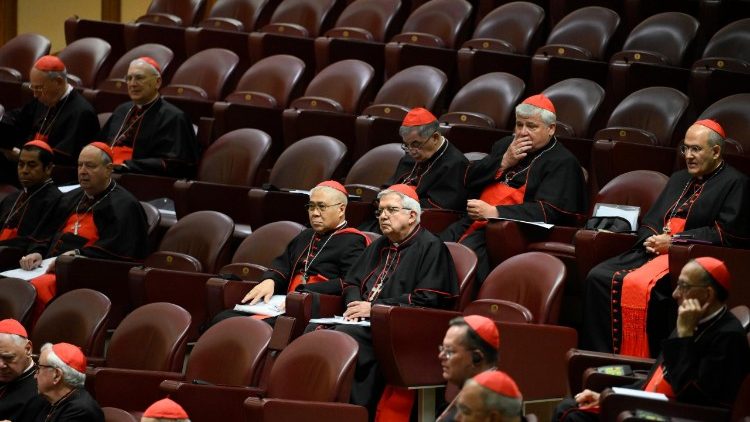
Cardinals Intensify Their Spiritual and Pastoral Preparation at the Third General Congregation
Exaudi Staff
24 April, 2025
1 min
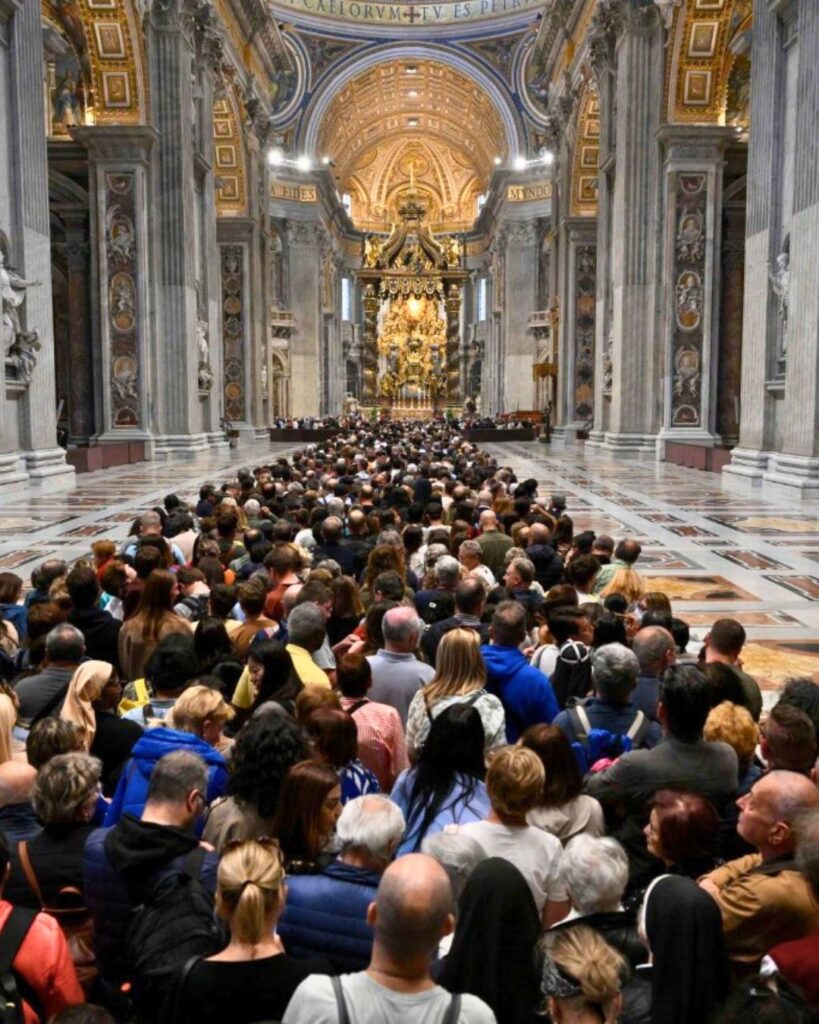
Rome unites in prayer: the world bids farewell to Pope Francis with love and gratitude
Exaudi Staff
24 April, 2025
2 min
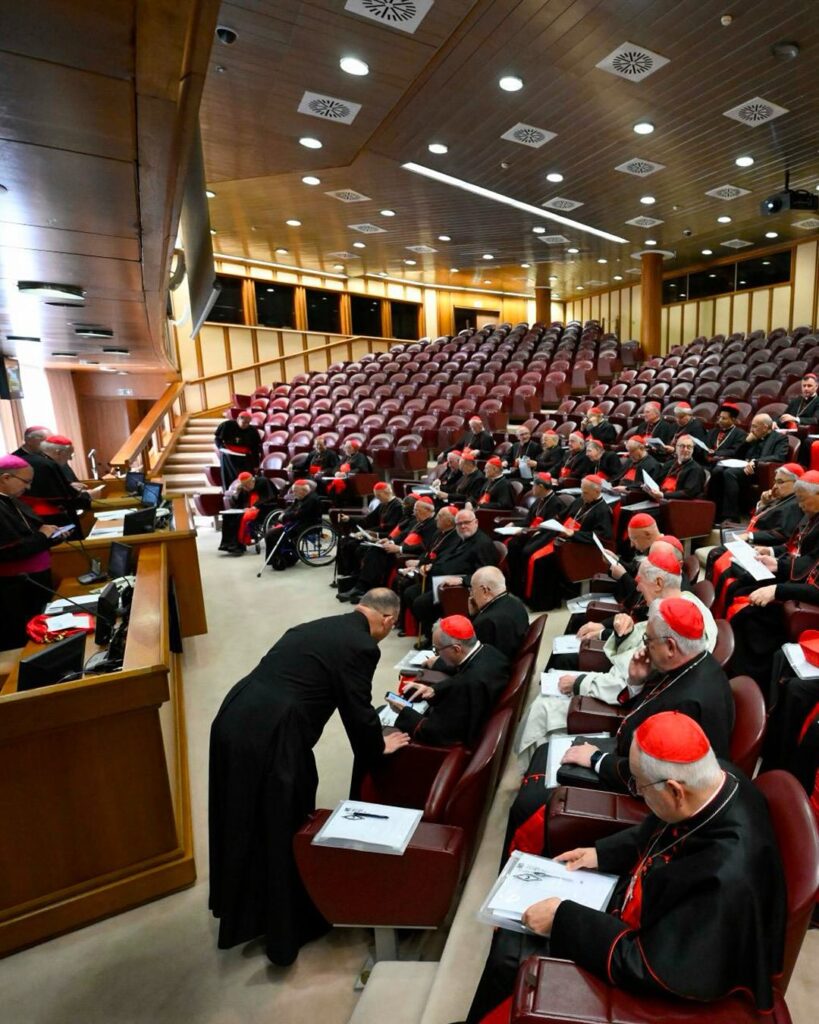
The first General Congregation of Cardinals was held in the Vatican
Exaudi Staff
23 April, 2025
2 min
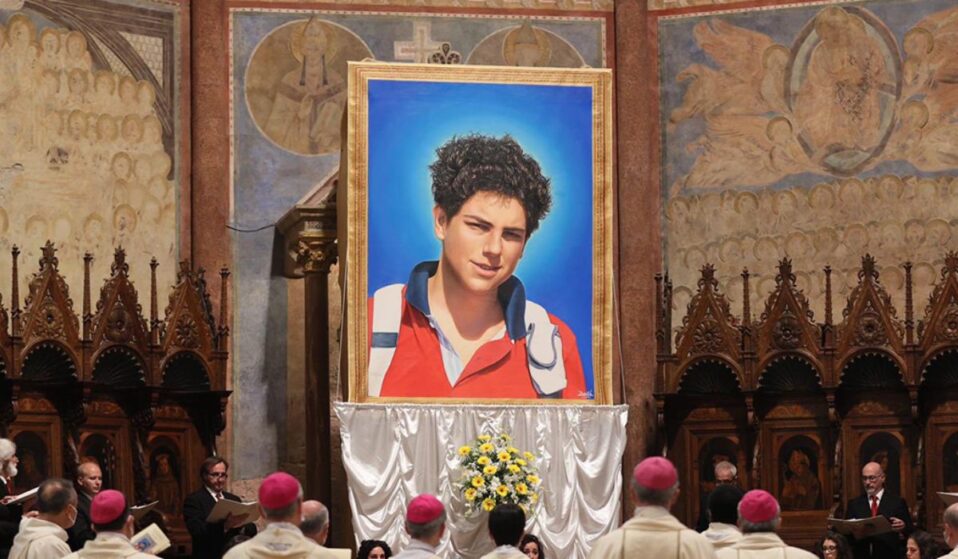
Holy See: Canonization of Carlo Acutis Postponed
Exaudi Staff
21 April, 2025
2 min
 (EN)
(EN)
 (ES)
(ES)
 (IT)
(IT)

